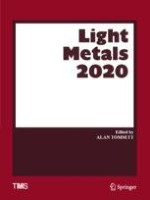2020 | OriginalPaper | Chapter
Environmental Benefits of Using Spent Pot Lining (SPL) in Cement Production
Authors : Mohammad Al Jawi, Chun Man Chow, Srinivasa Pujari, Michael Pan, Tanvi Kulkarni, Mohamed Mahmoud, Heba Akasha, Salman Abdulla
Published in: Light Metals 2020
Publisher: Springer International Publishing
Activate our intelligent search to find suitable subject content or patents.
Select sections of text to find matching patents with Artificial Intelligence. powered by
Select sections of text to find additional relevant content using AI-assisted search. powered by
